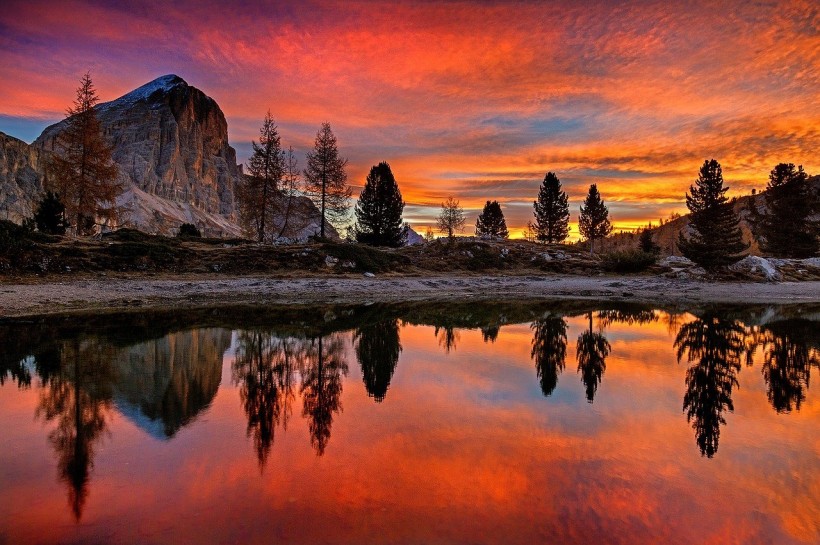Google Maps serves as a search engine for business locations - a map to direct users to their destination, and help drivers navigate the traffic. But sometimes it also helps people find unexpected things, otherwise hidden from the general public.
For instance, a Google Maps user recently shared a screenshot of a 'blood lake' hidden in the sandy hills of South Dakota. According to Daily Star, the mysterious aerial shot shows a red-colored lake in the Black Hills National Forest.

Spooky 'Blood Lake' Hidden in the Sandy Hills of South Dakota Found Via Google Maps
Google Maps Finds Mysterious "Bloody" Locations on Earth
The screenshot of the photo from Google Maps was shared on the subreddit r/GoogleMaps by user u/BlakeCakee who posted it with the caption: "I think I found a Blood Lake in South Dakota..."
The Black Hills National Forest is a popular location for mountain climbing and camping activities. It is located in the western part of the state and borders neighboring Wyoming.
However, the forest is also known to be home to gold mining and timber production, which could suggest that the heavy industry is responsible for the discoloring of the lake. The mining of gold, cement, gravel, and sand is a big industry in the state, which could adversely affect the environment if managed poorly.
Up until 2001, the Homestake Mine at the Black Hills was the primary gold mine in the forest until it was shut down. But until today, the state continues to rely on coal and oil-fueled power plants even though several dams along the Missouri River are used to produce hydroelectric power.
Aside from the Blood Lake, Daily Star also previously reported the "bloody puddle" in a remote field. The screenshot of the photo from Google Maps shows a patch of red in a large aerial shot of an unknown field. Some say it could be a place to sacrifice pigs in the traditional way of cutting off their heads. However, no one could provide evidence, so its location remains a mystery.
ALSO READ: 5 Strange Sights You'll Find on Google Earth: From Phantom Islands to Unexcavated Pyramids
How Does Mining Affect the Color of a Lake?
Lakes could come in different shapes and sizes, but the most noticeable characteristic of a lake is its color. They have different levels of transparency that can be striking and changes over time. Its color can tell many things about the water body, such as its quality, algal growth, and nutrient load.
When a lake is near a mining site, it is expected to be affected by its operations. According to the United States Geological Survey (USGS), mine drainage could form in bodies of water coming from a chemical reaction between water and rocks containing sulfur-bearing minerals.
The chemicals in the water are now sulfuric acid and dissolved iron that come out as solids to form the red, orange, and yellow sediments that color the body of water. Acidic, metal-laden drainage from abandoned coal mines can adversely affect the aquatic ecosystem.
Problems linked to mine drainage included contaminated drinking water, corroding effects of the acids in infrastructures, such as bridges, and disrupted growth and reproduction of aquatic life.
RELATED ARTICLE: 22-year-old Missing Persons Case is Solved by Accidental Discovery on Google Earth
Check out more news and information on Google Maps in Science Times.














